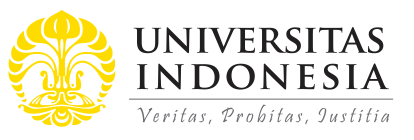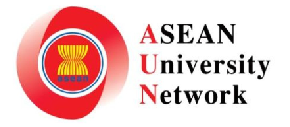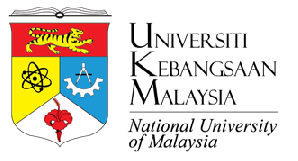
Abstract
Two villages in Cebu City, represented by 22 farmer-scientists, chose to conduct the third phase of their Urban Vegetable-Gardening Project in two relocation sites in the municipality of Bogo City to help displaced fisher folks affected by Typhoon Haiyan in 2013. The study aimed to determine the results of the project in addressing the eminent hunger in the relocation sites; and discuss the effects of communities’ initiatives in assisting fellow communities. The operation of the project emphasized collaboration between institutions, and communities’ involvement in decision-making and activities – all boils down to community engagement (Attree et al., 2011; Holland and Ramaley, 2008). The study was conducted in SM and Yolanda relocation sites in Bogo City from January to July 2016. Thirty randomly selected farmer-participants were interviewed using a questionnaire which was pre-tested and validated. Key informant interviews, focus group discussions and secondary data gathering were also done. The project results noted were: 1) immediate food sources, especially in urban areas like the two relocation sites where there is limited space to plant; 2) increased in yield and income based on farmers’ records; and 3) improved social capital (building trust, knowledge sharing and provision of assistance) among farmers, local government units and universities brought by communities’ involvement in project implementation. It is therefore concluded that vegetable-gardening in the relocations sites could provide immediate food and income sources consistent with previous studies (Ozawa, 2010; PCCAARD, 2007). Further, community’s engagement in extension projects facilitates not only technology and knowledge dissemination but also social capital and community networks and linkages, also consistent with previous studies (Ozawa, 2010). Based on the positive outcomes recognized, the project is recommended for expansion to other urban areas in Cebu province.
References
Akire, S., R. Meinzen-Dick, A. Peterman, A.R. Quisumbing, G. Seymour, & A. Vaz (2013). The Women’s Empowerment in Agriculture Index. World Development. 53. Pp 71-91
Attree, P., B. French, B. Milton, S. Povall, M. Whitehead, & J. Popay (2011). The experience of community engagement for individuals: a rapid review of evidence. Health & Social Care in the Community, Volume 19(3), 250-260. doi: 10.1111/j.1365-2524.2010.00976.x Available from http://dx.doi.org/10.1111/j.1365-2524.2010.00976.x
Baum, F. (2008) Foreword to Health promotion in action: from local to global empowerment. Accessed at ww w.who.int
Clayton, J. (2011). Living the multicultural city: acceptance, belonging and young identity in the city of Leicester, England. Journal on Ethnic and Racial Studies. Volume 35 (9). Retrieved at: http://www.tandfonline.com/doi/abs/10.1080/01419870.2011.605457
Duldalo, V.A. (2001) “Gulayan at bulaklakan: A component of the government’s Urban Agriculture Program”. Paper presented during the National Conference Workshop on Urban Agricultural Systems in the Philippines, January 15 17, 2001, Bureau of Soils and Water Management, Quezon City.
FAO (2011). The role of women in agriculture. ESA Working Paper No. 11 02. Agricultural Development and Economics Division accessed a t www.fao.org/economic/esa
FSTP Manual of Operations (2009). Agricultural Systems Cluster, College of Agriculture, University of the Philippines Los Banos (unpublished).
Ghosh, M.M. & Ghosh, A. (2014). Analysis of women participation in Indian agriculture. IOSR Journal of Humanities and Social Science. Vol. 19 (5). Pp 1-6 ISSN 2279-0849 accessed at www.iosrjournals.org
Hildebrandt, E. & Persily, C.A. (2008). The community empowerment theory. Springer Publishing, New York. Accessed at: www.springer.com
Holland, B., & Ramaley, J. A. (2008). Creating a supportive environment for community-university engagement: conceptual frameworks. Paper presented at the HERDSA 2008: Engaging Communities. Available from https://herdsa.org.au/publications/conference-proceedings/research-and-development-higher-education-place-learning-and-62
International Food Policy Research Institute (2012). The Women’s Empowerment in Agriculture Index accessed at www.ifpri.org
Kearney, A. R. (2006). Residential development patterns and neighborhood satisfaction: Impacts of density and nearby nature. SAGE Journals. Volume 38 (1). Pp 112 139. Retrieved at https://doi.org/10.117710013916505277607
Krishna, A. and E. Shrader (1999). Social capital assessment tool. Paper presented at the Conference on Social Capital and Poverty Reduction. June 22 24, 1999. The World Bank. Washington D.C.
Labonte, R. & Laverack, G. (2008). Health promotion in action: from local to global empowerment . Accessed at: www.who.int
Lambrecht, I, Schuster, M., Asare, S., & Pelleriaux, L. (2017). Changing gender roles in agriculture? Evidence from 20 years of data in Ghana. IFPR Discussion Paper 01623. Washington DC: International Food Policy Research Institute, Development Strategy and Governance Division.
Melodillar, C.O., R.G. Davide and WS Velasco (2016). Towards l iberation from poverty and hunger: the Corn based Farmer Scientists Research, Development and Extension Training Program (FSTP) for Sustainable Agricultural Dev e lopment under E.O. 710. Journal of Perspectives on Development Policy in the Greater Mekong Reg ion. Volume 4 (1). Chiang Rai Rajabaht University, Thailand. Retrieved at: http://icmr.crru.in.th
Moore, T., McDonald, M., McHugh-Dillon, H., & West, S. (2016). Community engagement: A key strategy for improving outcomes for Australian families (Child Family Community Australia Paper No. 39). Melbourne: Australian Institute of Family Studies. Available from https://aifs.gov.au/cfca/sites/default/files/cfca39-community-engagement.pdf
Nitural, P.S. (n.d.) Urban Agriculture Program in the Philippines: Its Beginnings and Status. Retrieved at: n.fftc.org.tw/htmlarea_file/activities/20110719103448/paper 947796964. pdf on June 23, 2016
Ozawa, Takuya. (2010 ). “Phenomenological study of urban vegetable gardening in Halifax: How does urban vegetable gardening activity affects the daily lives of the gardeners and their sense of community?”. BS Thesis. Dalhousie Univers ity. Accessed at: www.dal.ca/content/dam/dalhousie/pdf/science/environmental science program/Honours%20theses/TakuyaOzawa.pdf
Philippine Council for Agriculture, Forestry and Natural Resources Research and Development. (2007) “Urban vegetable production in the Philippines”. Los Baños, Laguna: PCARRD DOST. 96p. (Book Series No. 176/2007) ISBN 971 20 0535 0.
Putnam, R.D. (19 95). Bowling Alone: The America’s declining social capital. Journal of Democracy. Vol. 6 (199) 1. Pp 64 78. Retrieved at http://dlc dlib.indiana.edu/dlc/bitstream/ha ndle/10535/7661/siisiairen.pdf
Sarkissian, W., Hofer, N., Shore, Y., Vajda, S., & Wilkinson, C. (2009). Kitchen table sustainability: Practical recipes for community engagement with sustainability. London: Earthscan.
Urban Vegetable Gardening Project Annual Reports (2014 to 2016). Agricultural Systems Cluster, College of Agriculture, University of the Philippines Los Banos unpublished).
USDA Alternative Farming System Information Center. Urban agriculture. An abbreviated list of references and resour ce guide, 2000. https://pubs.nal.usda.gov/sites/pubs.nal.usda.gov/files/urban_0.htm
Velasco, W.S. (2016). FSTP Background in FSTP Training Modules (unpublished). Agricultu ral Systems Institute, College of Agriculture, UP Los Banos, Laguna.
Yanga, B. (2014). Proposed Bill on Urban Agriculture Pushed. A Newsletter retrieved at http://ati.da.gov.ph/news/2014/proposed bill urban agriculture pushed on June 23 , 2016
Recommended Citation
Anuada, Anecito and Melodillar, Carla
(2017).
Communities' initiatives in addressing hunger in relocation sites in Cebu, Philippines.
ASEAN Journal of Community Engagement, 1(2).
Available at: https://doi.org/10.7454/ajce.v1i2.86







